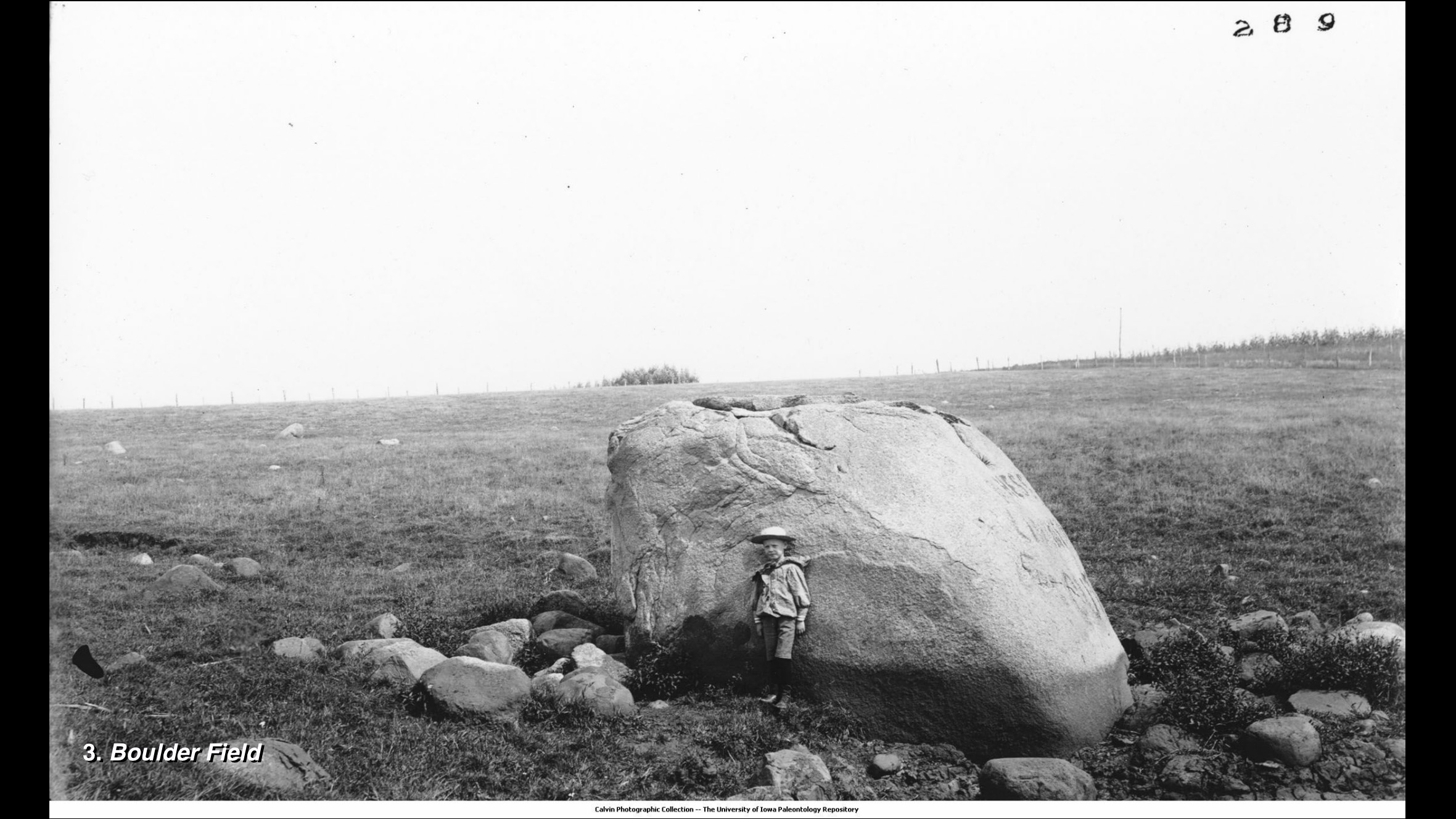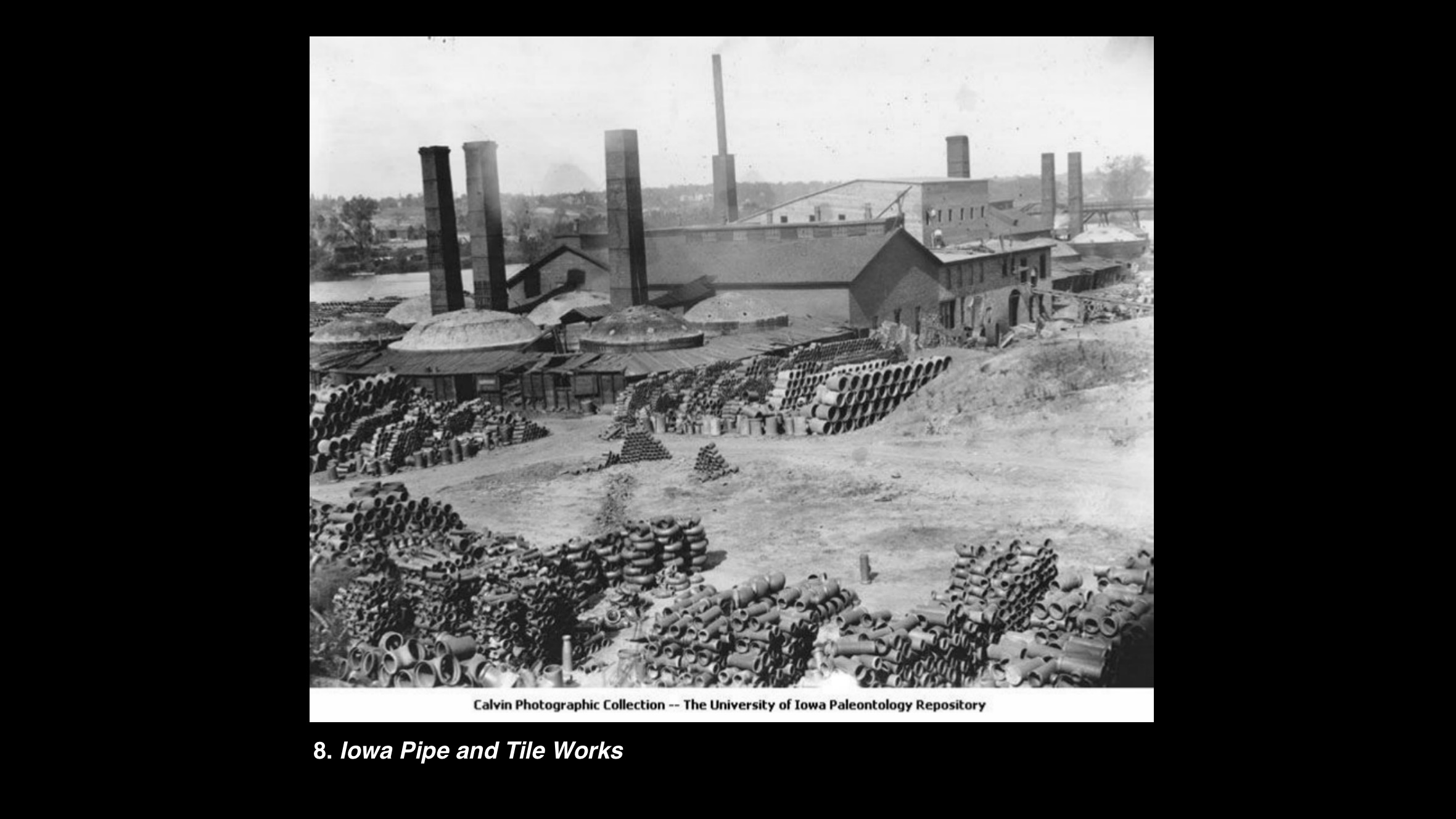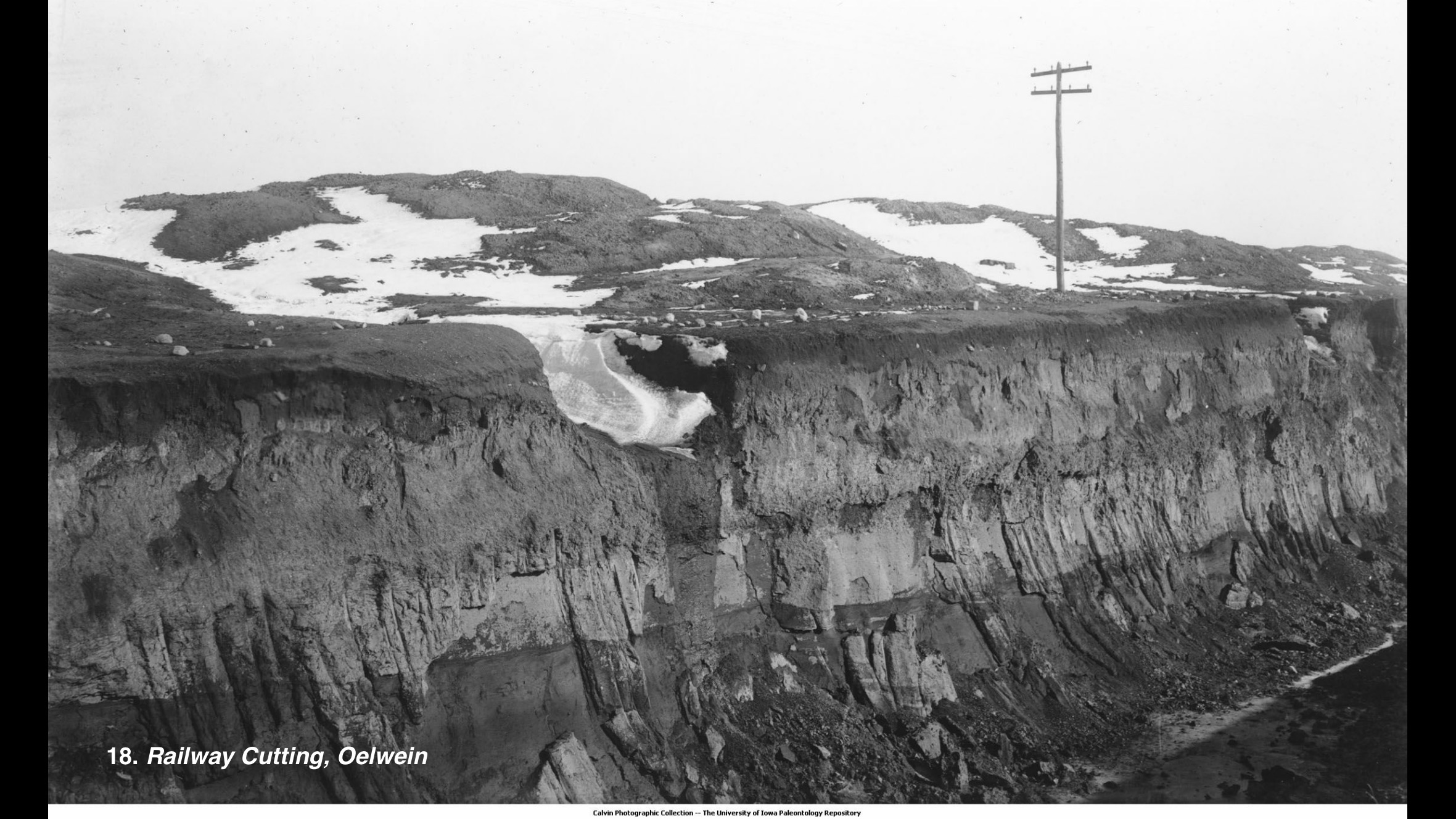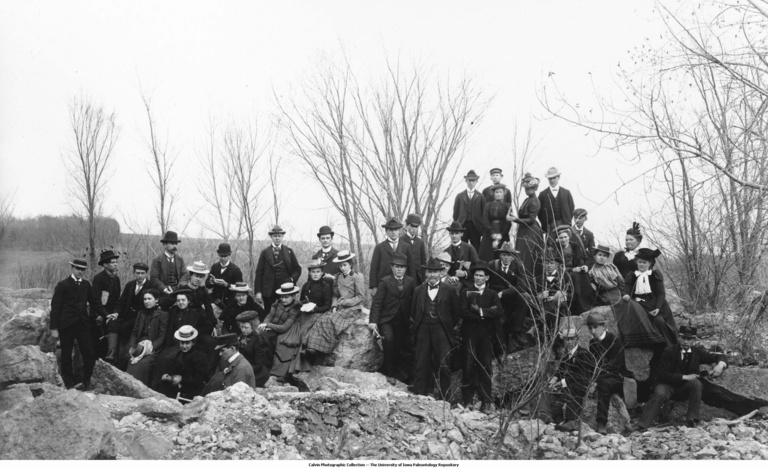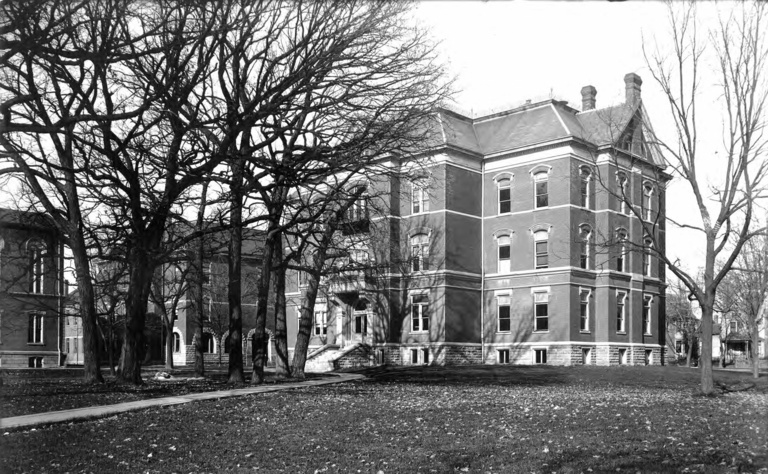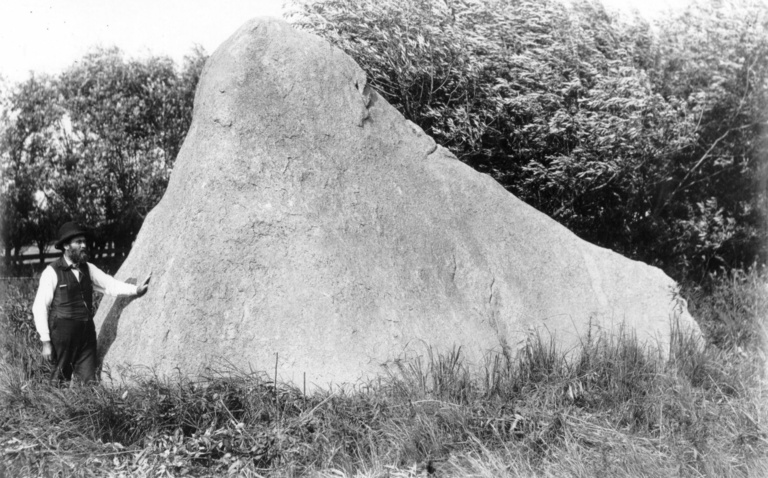Main navigation
Welcome to the Calvin Photographic Collection!
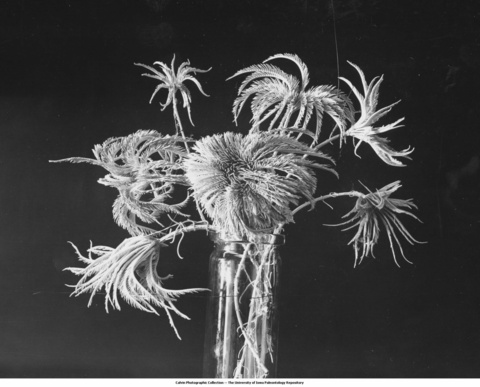
During the mid-1800s photography became a popular hobby and natural tool for scientists. Samuel Calvin, Professor of Natural Sciences at the University of Iowa (1873-1911) and State Geologist, took more than 5,000 glass plate negatives, which he used to illustrate specific geological features for class instruction, public lectures, and publications. The photographic techniques are of high quality, and the images are as aesthetically pleasing as they are geologically informative.
In addition to geological landscapes and features, Calvin documented mines, quarries, mills, and other buildings. The collection also contains portraits of his family, colleagues, and classes in the field. While Calvin may have taken most photographs to exhibit geological features, the images are beautifully composed. Calvin did the developing himself, producing rich blacks and a full range of grays. The light, shadows, and reflections are wonderful. The abstract photographs of rock facades and specimen details are fascinating. Calvin was well aware of the drama of the landscape and, in the fashion of the late 1800's, tried to capture nature.
The photographs
The collection
The late nineteenth century was a period of exploration and documentation. Mass-produced dry glass plates with light-sensitive gelatin emulsion were introduced into the United States in 1879, enabling everyone to become a photographer. Calvin and his colleagues carried their cameras into the field and around the world. The Calvin Photographic Collection consists of over 10,000 gelatin dry plates and glass plate negatives produced by Calvin and his colleagues from the mid-1880's through the 1920's. The glass negatives are in three formats, 8x10, 5x7, and 3x4. The Geoscience Department has four glass plate and film cameras, of different brands and patent dates, which have been attributed to Calvin. Associated with the original glass negatives is a collection of over 7,000 lantern slides, most of which duplicate the glass negatives.
History of the collection
What is remarkable about the Calvin Photographic Collection is that it exists at all! The glass plates are fragile, the emulsion easily damaged, and they are extremely heavy. The Geoscience Department has kept them through two major moves. The first, in 1904, was masterminded by Calvin, and he documented it in a series of 20 photographs. Old Science Hall (now Calvin Hall), a large brick building that housed the natural sciences collections, laboratories and classrooms, was rolled 150 feet across the street and turned 90 degrees without causing any cracks to form. The movement was so slow that classes were held throughout the 5-month move.
There is no written history of Calvin's photographic collection, and use of the collection before 1976 is not well-documented. At some time, negatives were assigned numbers and indexed in cross-referenced card files (which were later combined, becoming virtually unusable). In 1975, coinciding with the second move to a different building (Trowbridge Hall), the Geoscience Department obtained private funding for a bicentennial project to preserve the negatives and make prints of the collection - a project which was carried out over 5 years. The collection was inventoried and the plates were transferred to acid-free sleeves. Excellent prints were produced from most of the plates.
Conservation and storage
The glass negatives are stored in acid-free sleeves in baked-enamel cabinets (wood or painted-metal cabinets are not recommended), and require cardboard spacers every 10 sleeves to support the plates and keep them vertical (currently, spacers are absent and some parts of the collection remain in wooden drawers). Although pre-1976 storage conditions did not include air conditioning, there appears to be little deterioration of the plates. Blistering of the emulsion, which indicates moisture problems, is not apparent, and there are very few glass plates with mold or other biological attacks. Mechanical deterioration is visible at many of the edges where small pieces of emulsion have flaked off. Most of this is due to incorrect handling over time, and also to dry conditions. Scratches in the emulsion, which are the most frequent imperfections, indicate mishandling. Some plates show signs of chemical deterioration such as oils from fingerprints and haloes on the emulsion side, indicating that the silver is migrating to the surface.
Use of the collection
Teaching
Lantern slide copies of Calvin's glass plate negatives were used for class and public lectures by Calvin and later professors until about 1980. Many of the photographs are labeled "class photographs" and Calvin most probably used these for teaching. Calvin also assembled photographs of individual specimens, according to scientific classification and geologic stratigraphy, in identification handbooks for his paleontology classes. Three copies of "Calvin's Paleontology Plate Book" are catalogued in the University's Geology Library.
Media and exhibitions
Calvin's photographs of the University have been of continual interest and are frequently used in newspaper and popular magazine articles. In 1984, several photographs were used in a traveling exhibition curated by the Art Institute of Chicago. One of Calvin's photographs provides a backdrop to an exhibit at the Herbert Hoover Presidential Library in West Branch, Iowa. The enlarged image is 8 x 12 ft and attests to the quality of the glass negative.
Science and research
Calvin was self-trained in geology. His special interest was Pleistocene geology. Calvin expanded on the earlier geological surveys of Iowa (made by Hall in 1855 and White in 1868), and set the groundwork for modern interpretations of the geology, stratigraphy and paleontology in the state. Geological features he documented in his research and photographs are topics of research today. The Silurian carbonate build-ups and the origins of these mounds continue to be studied. Studies on the sedimentation and stratigraphic correlations within the Devonian formations are currently being investigated by the Iowa Geological Survey Bureau. Miscorrelations of the Mississippian beds in southeast and north-central Iowa are still being unraveled. Even his greatest research interest, the Iowan glacial, was not fully understood until the 1960's, when the glacial stage that he placed between the Illinois and Wisconsin stages was proven not to exist. Calvin's photographs record features he could not explain, such as the frost wedge, which was not recognized until the 1970's. His photograph corroborates evidence for permafrost in Iowa and indicates that during the Wisconsinan it was very cold in east-central Iowa.
Most striking and useful for geologic interpretation is the lack of trees in Calvin's photographs. The pioneers and industries consumed most of the trees for buildings and fuel. Today, Iowa is more wooded, and many of the geologic localities that Calvin photographed, as well as the new roads and railcuts, have since been overgrown or lost to new construction. The photographs are potentially useful for the study of agricultural changes and land use. They give a glimpse of the native prairie that existed in Iowa in the late 1800's.
The Calvin Project
Between 1998 and 2001, the Geoscience Department undertook a project to preserve the collection and increase its accessibility. A grant from the State Historical Society of Iowa, Resource Enhancement and Protection - Historical Resource Development Program, enabled the Geoscience Department to fulfill its goal of reorganizing the photographs and creating a searchable database. The grant funds, matched by the Department, provided for the purchase of archival storage media and the hiring of a student assistant to reorganize the photographs and build a database. The project was divided into three main tasks: transfer 100 glass plate negatives into negative folders, place the prints in polypropylene sleeves, and create the database using Access '97. All the original photographs (1,736) were databased. Of these 869 photographs are of geology and landscapes, and 634 are of the University and Iowa City environs. The Calvin Photographic Collection (CPC) database allows the user to search for images by locality, geological age, description, theme, photographer, date and plate size.
The second phase of the project, to make the Calvin Photographic Collection accessible via the Internet, was realized with a grant from the University of Iowa Arts and Humanities Initiative. Funds were provided for student assistants to scan 800 photographs and link the digital images to the Calvin Image Database, the on-line exhibition "Fixing the Image: Samuel Calvin's Vision of Iowa", and "Calvin's Scrapbook" - the on-line collection of images of the University, mills, mines, and other places in and beyond Iowa.
"Fixing the Image: Samuel Calvin's Vision of Iowa"
Welcome to the virtual exhibition "Fixing the Image: Samuel Calvin's Vision of Iowa," a selection of Calvin's photographs of Iowa and beyond.
1. Bluff on the Iowa or Oneota River
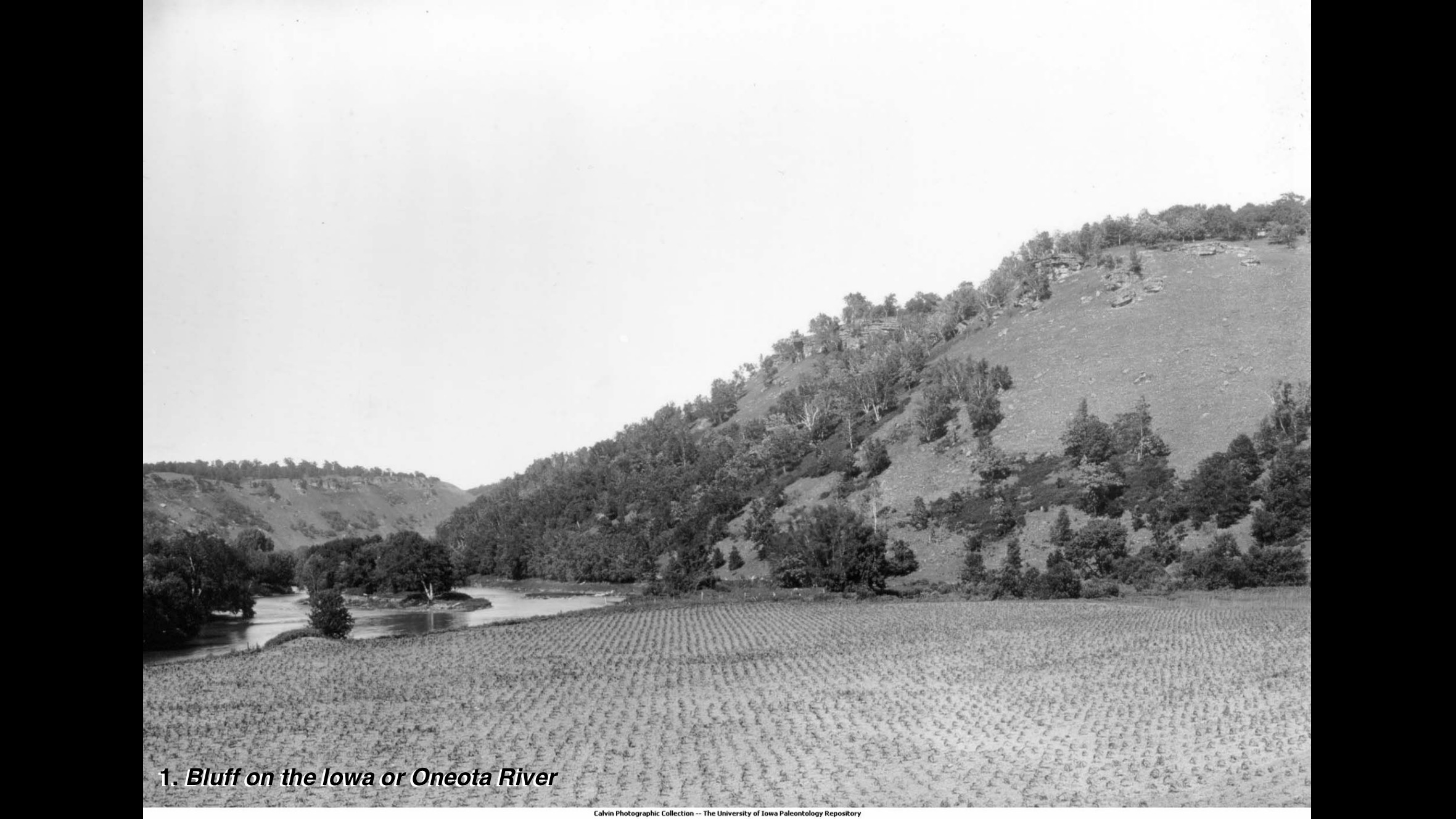
US, Iowa, Allamakee Co., near the south of Bear Creek.
Ordovician, Saint Croix Sandstone, Oneota Limestone.
Photographed by Calvin. Photograph No. 16
2. Looking east toward valley of the Little Sioux River

US, Iowa, Buena Vista Co., mouth of Fox Creek.
Pleistocene.
Photographed by Calvin. Photograph No. 855
3. Boulder Field
4. A view in Wild Cat Den Park
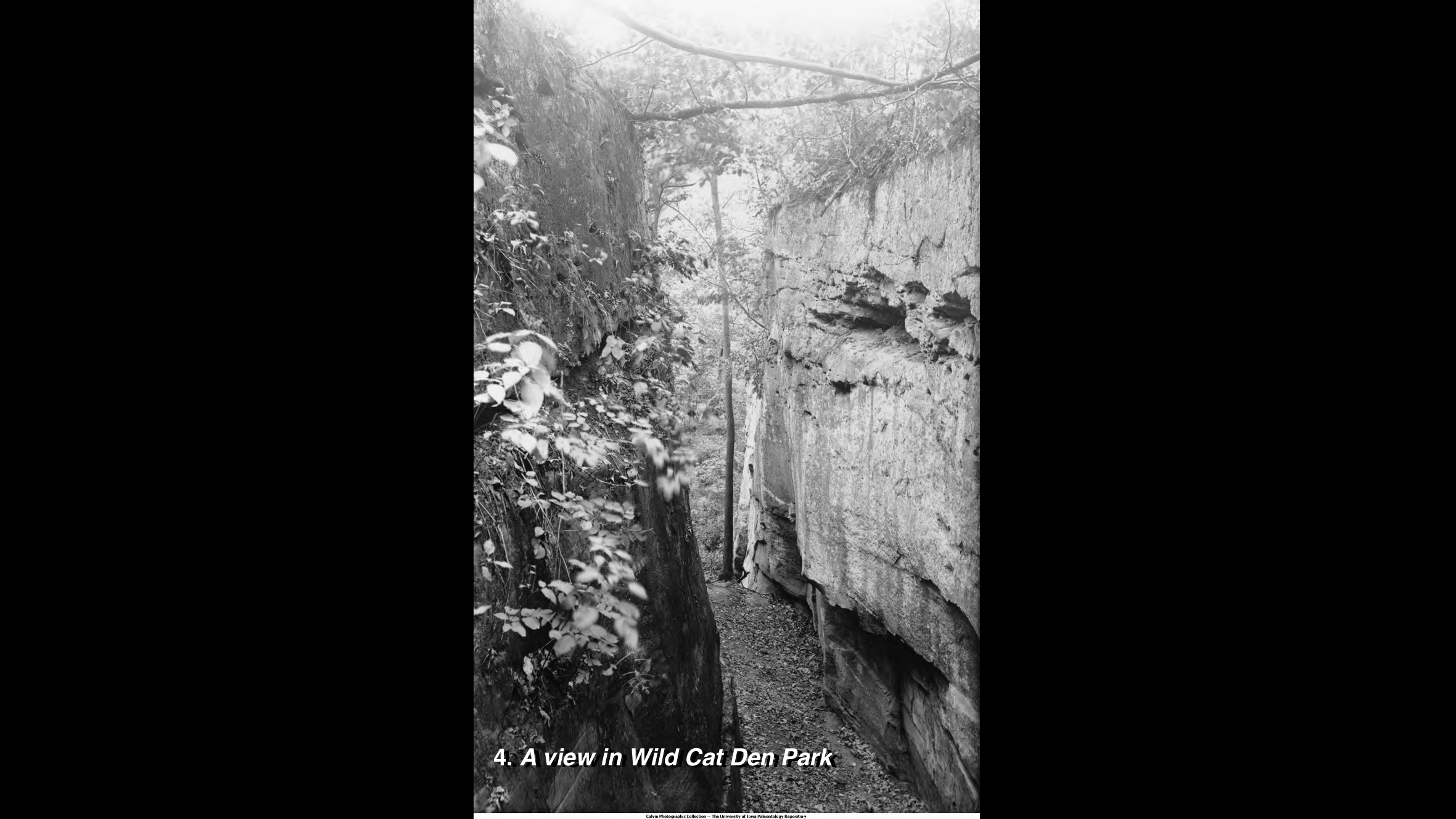
US, Iowa, Muscatine Co., Wild Cat Den Park.
Pennsylvanian, Carboniferous Sandstone.
Photographed by Calvin. Photograph No. 221
5. Gorge in Niagaran Limestone
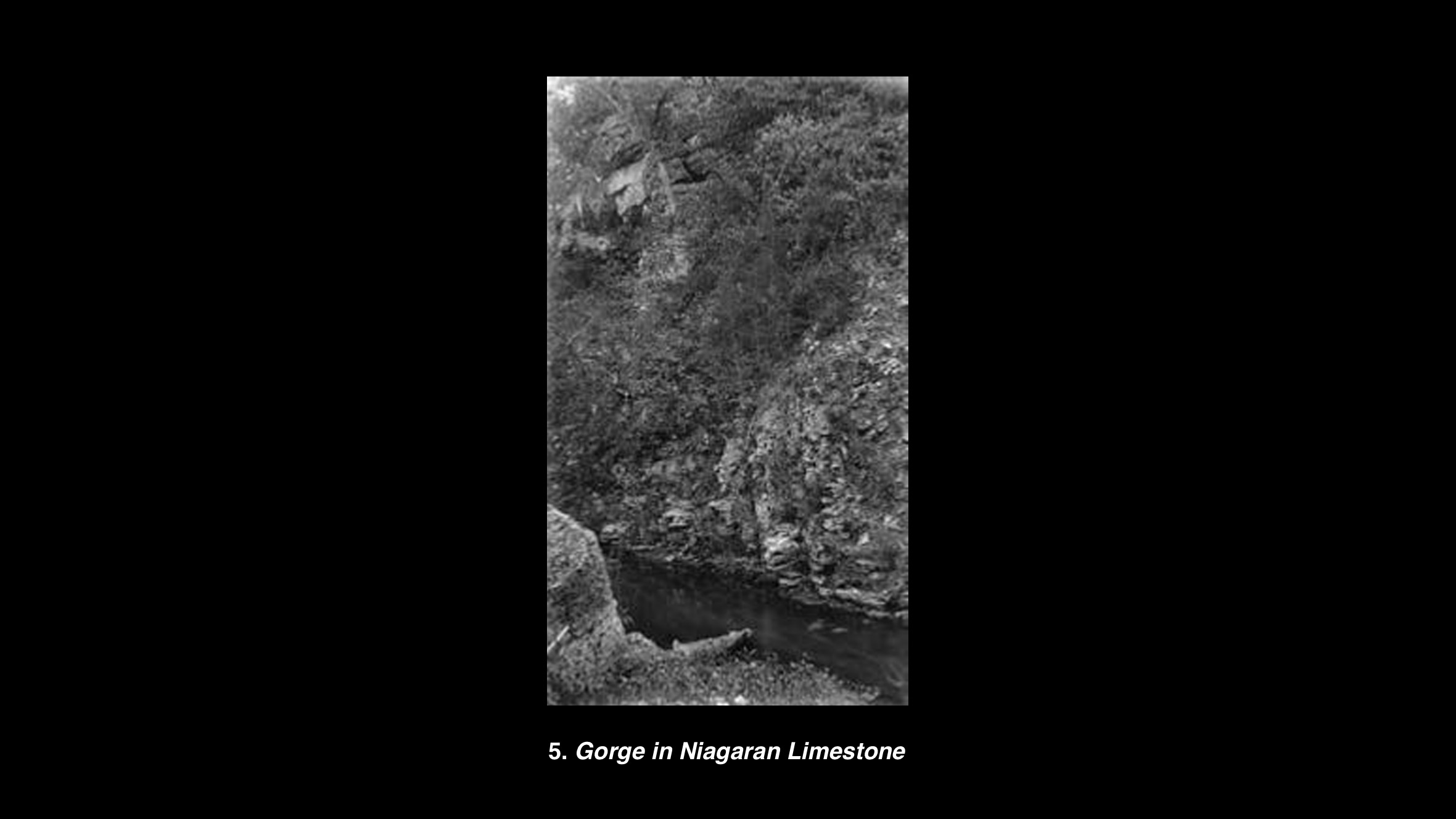
US, Iowa, Delaware Co., Section 10, Twp. 90 R. 4.
Silurian, Niagaran Limestone and Maquoketa Shale.
Photographed by Calvin. Photograph No. 159
6. A view near Graf
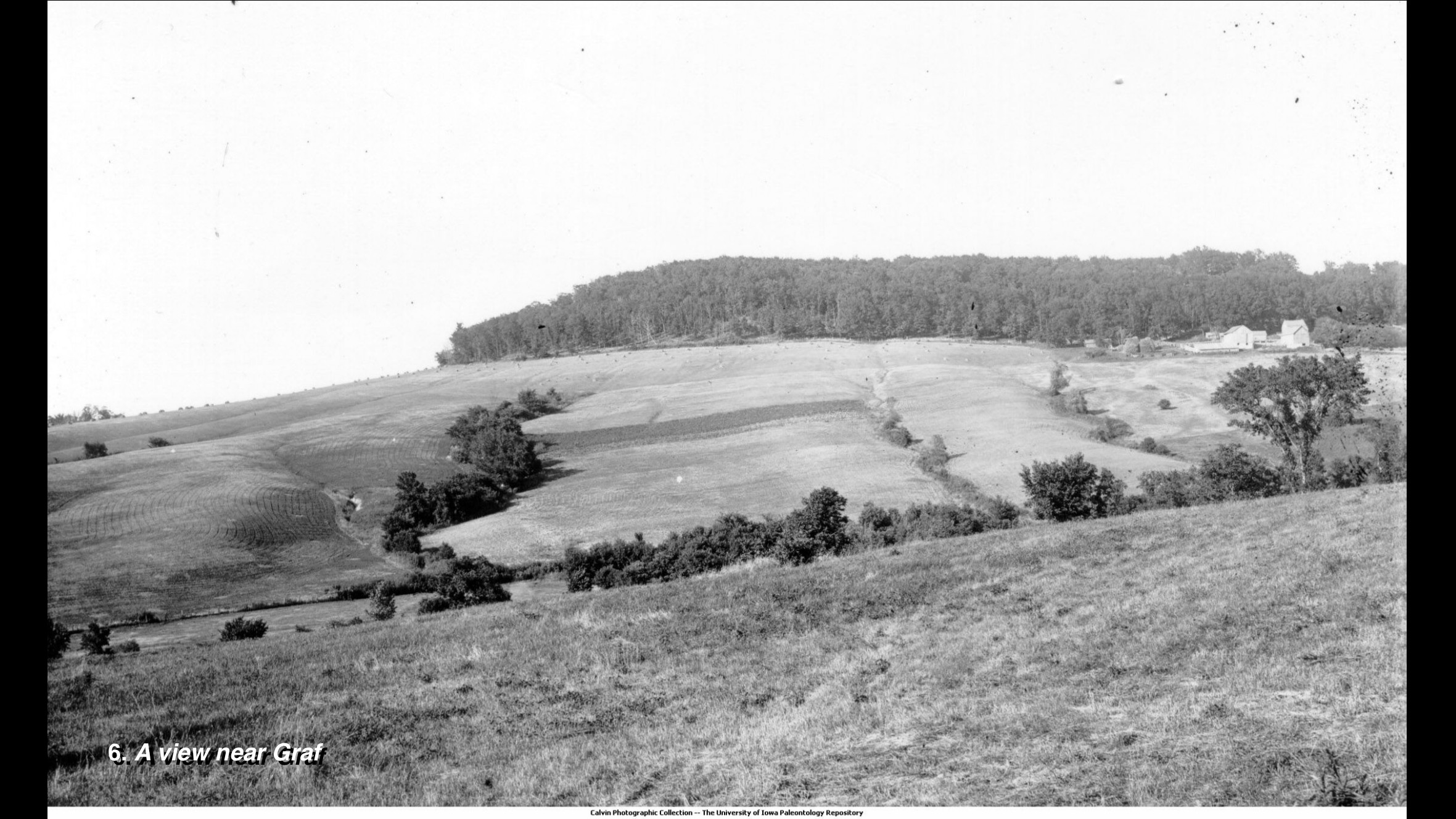
US, Iowa, Dubuque Co., near Graf.
Ordovician, Maquoketa Limestone and Shales.
Photographed by Calvin. Photograph No. 23
7. Clay pit of the Mason City Brick and Tile Company
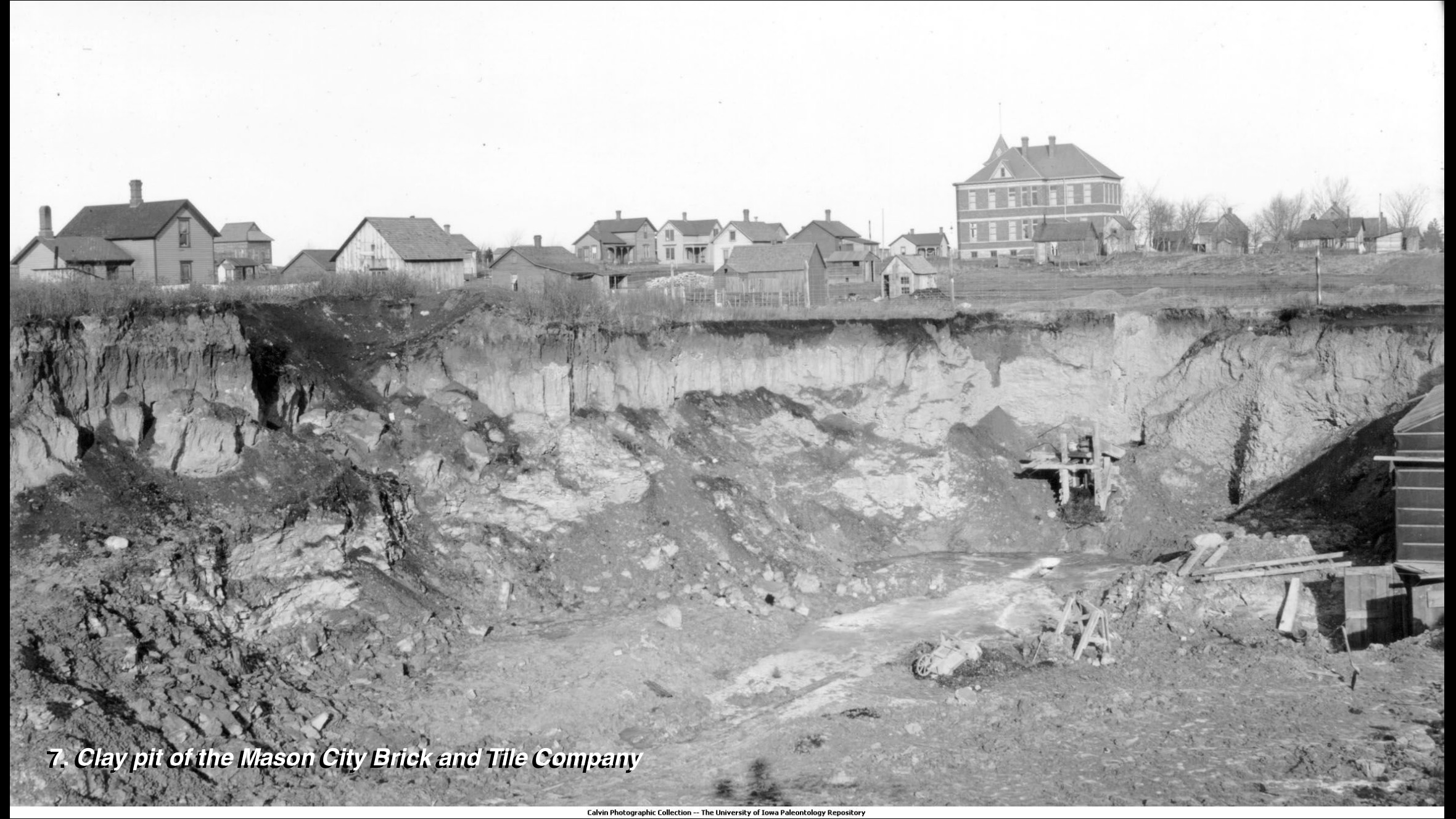
US, Iowa, Cerro Gordo Co., Mason City.
Devonian, Lime Creek Shales.
Photographed by Calvin. Photograph No. 91
8. Iowa Pipe and Tile Works
9. "The Mound" Residence
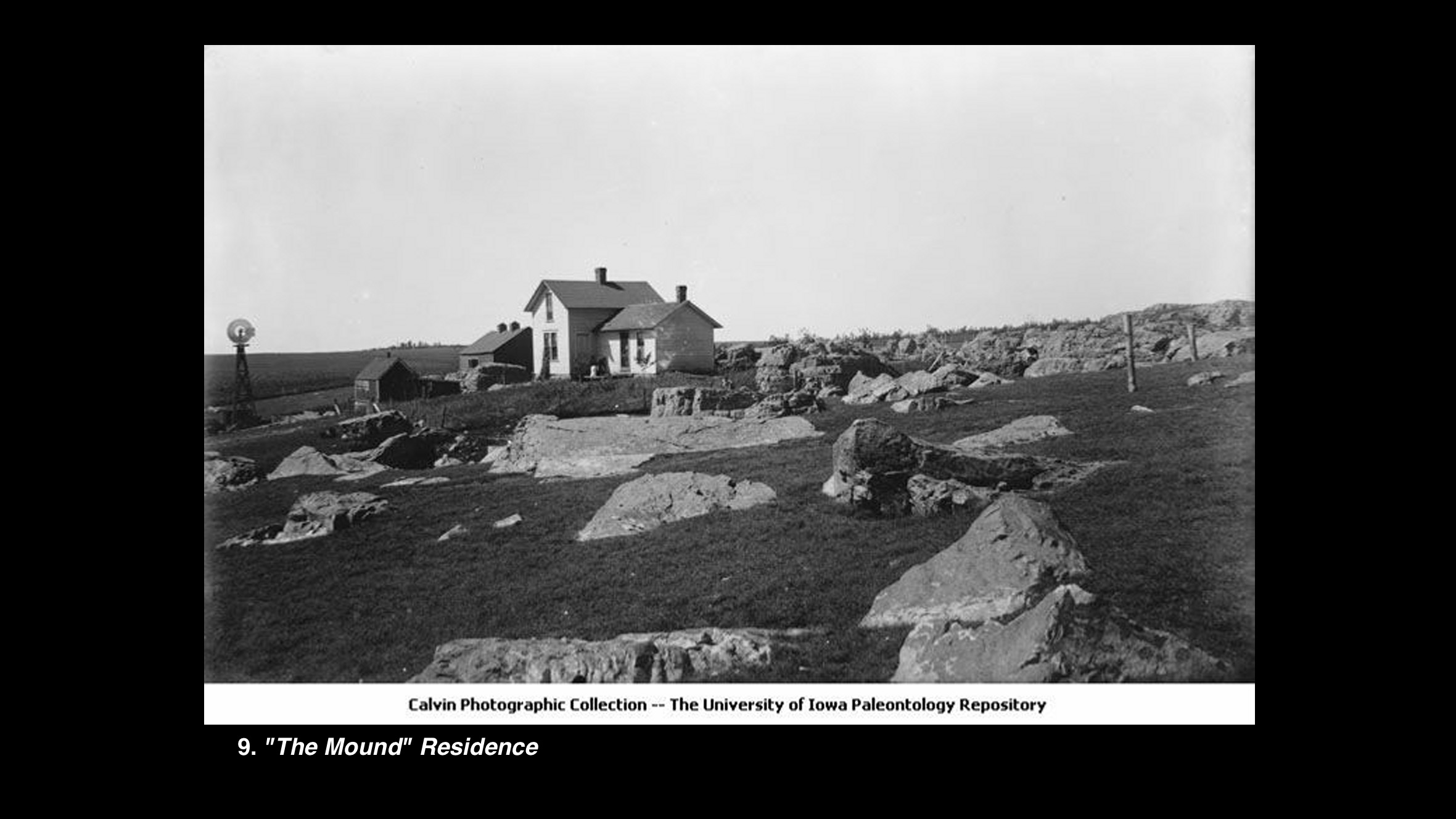
US, Minnesota, Rock Co., north of Luverne, on west side of Sioux Quartzite.
Pre-Cambrian, Sioux Quartzite.
Photographed by Calvin. Photograph No. 250
10. A view on the Iowa River
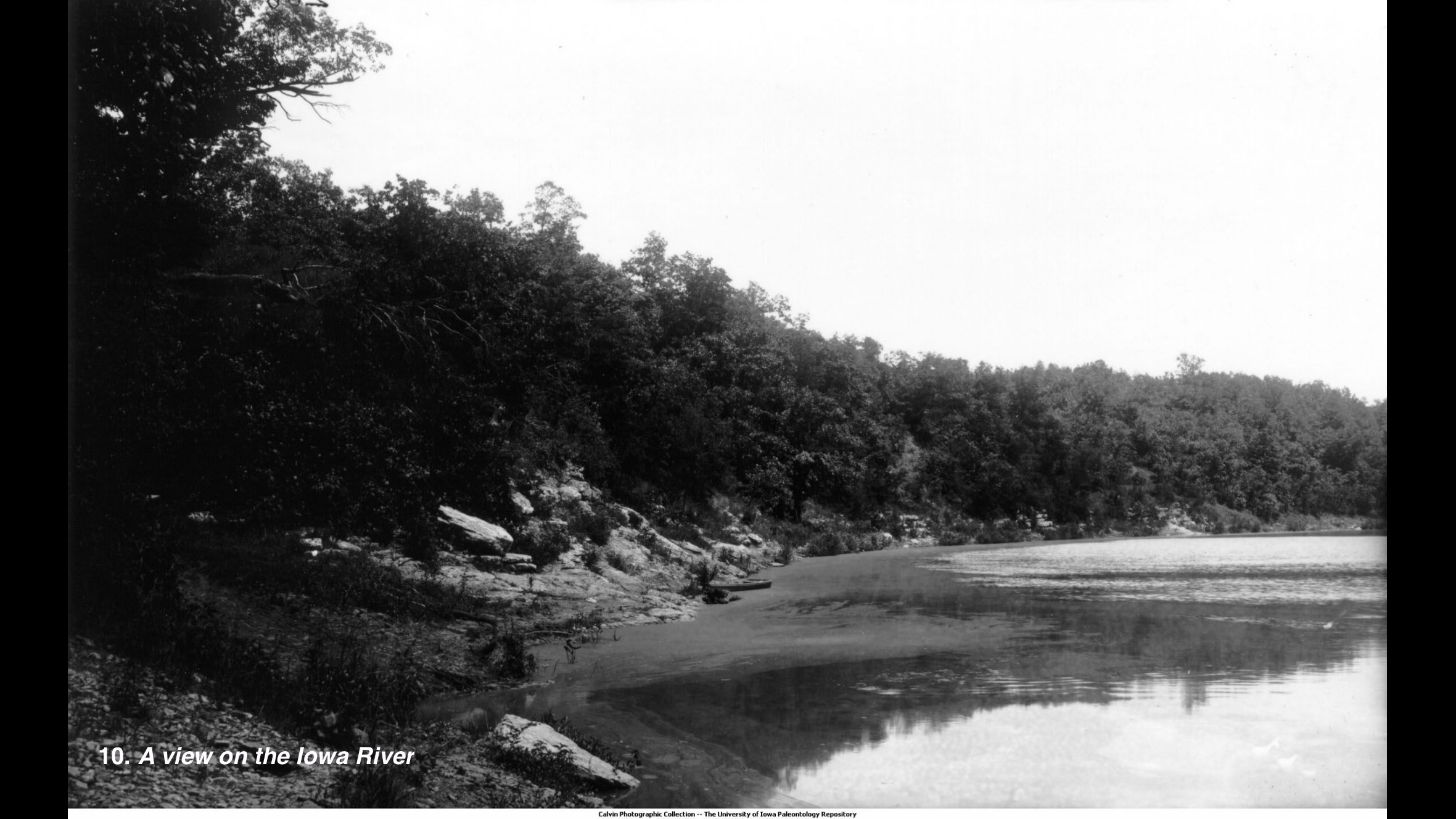
US, Iowa, Johnson Co., bluff above Turkey Creek.
Devonian.
Photographed by Calvin. Photograph No. 119
11. Mouth of cave at Devil's Den
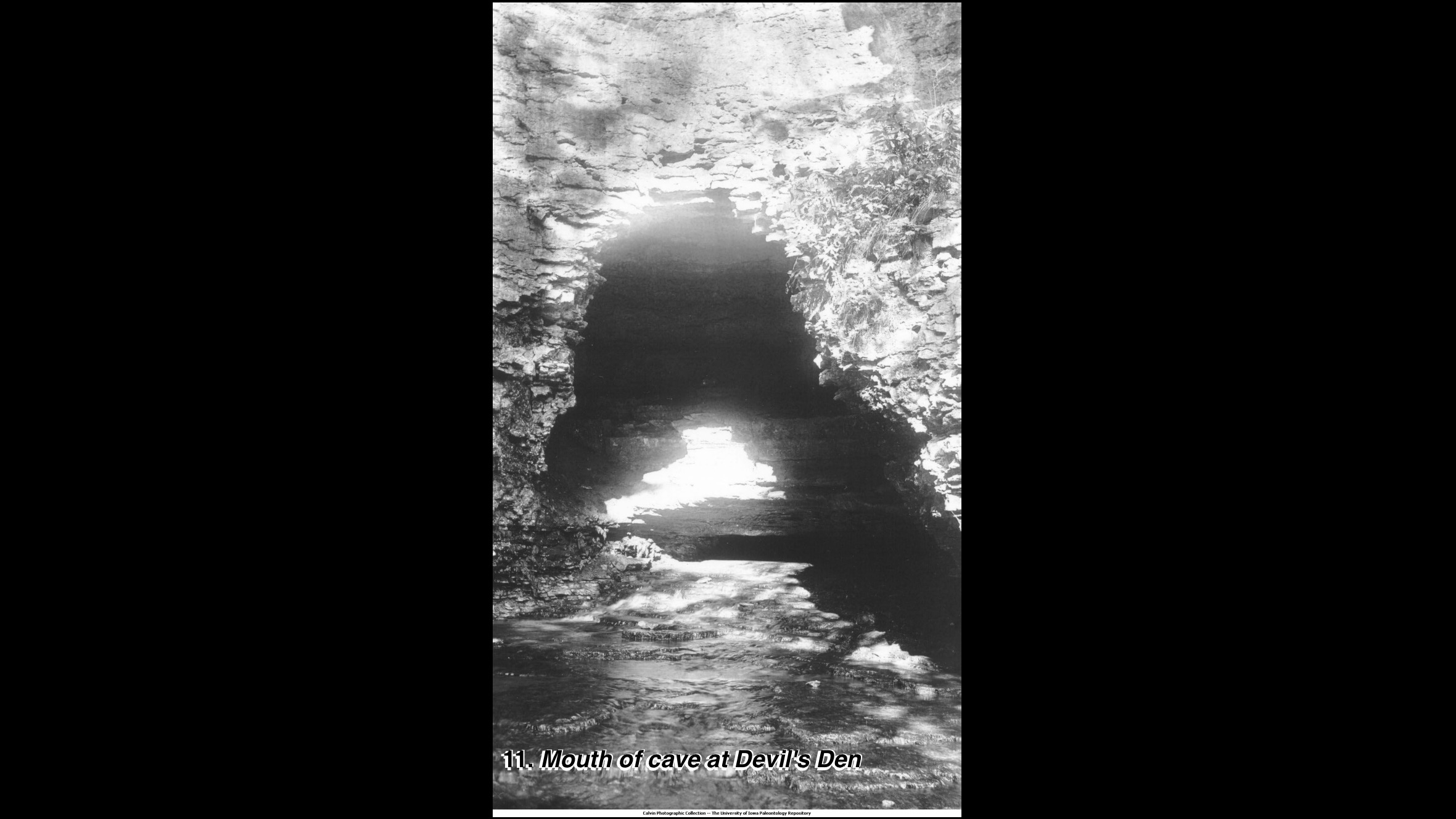
US, Iowa, Allamakee Co., Devil's Den.
Ordovician.
Photographed by Calvin. Photograph No. 40
12. Cross-bedding in Coal Measure Sandstone
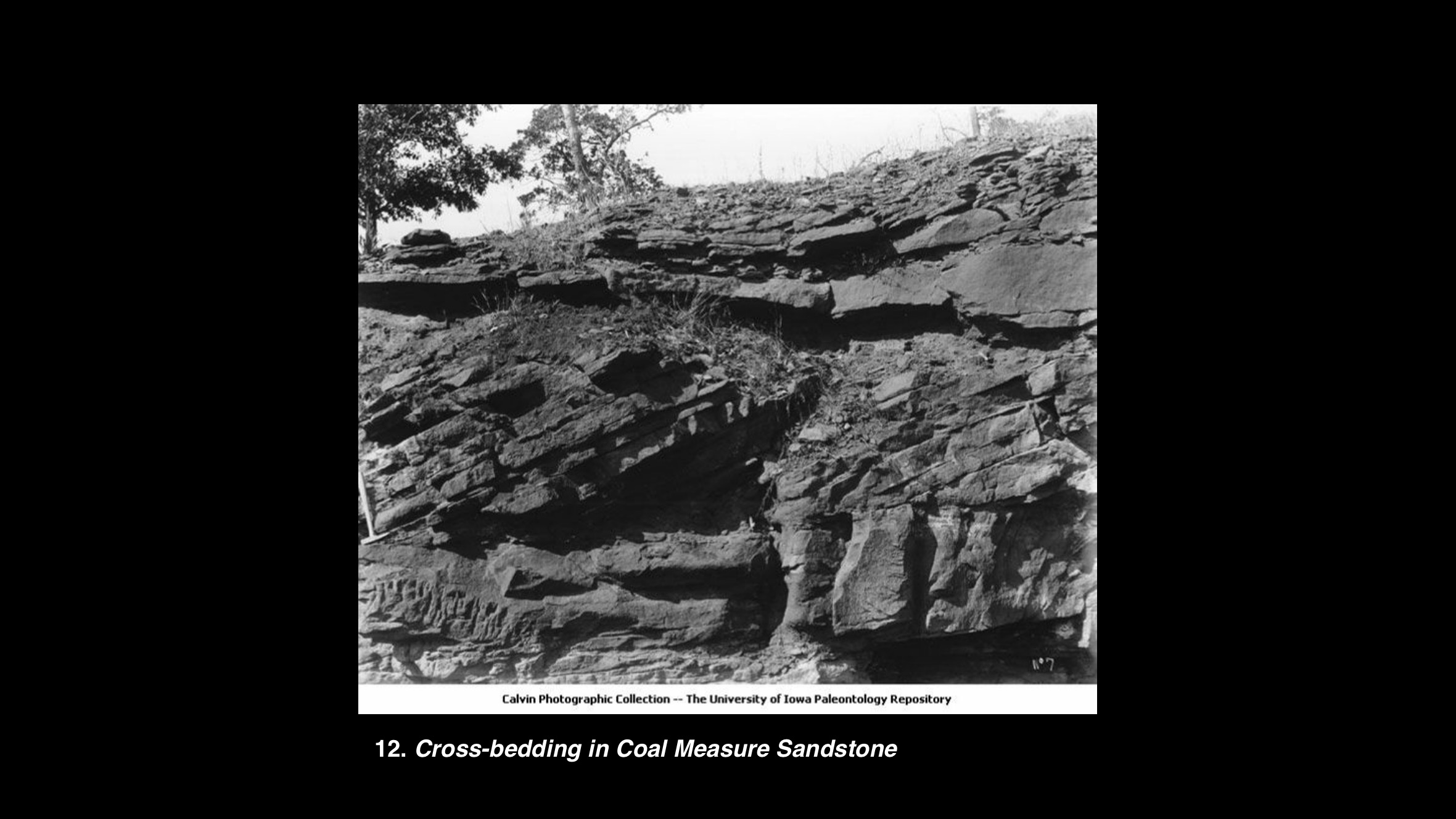
US, Iowa, Marion Co., Redrock.
Pennsylvanian, Coal Measure Sandstone.
Photograph No. 1097
13. Bealer Quarry
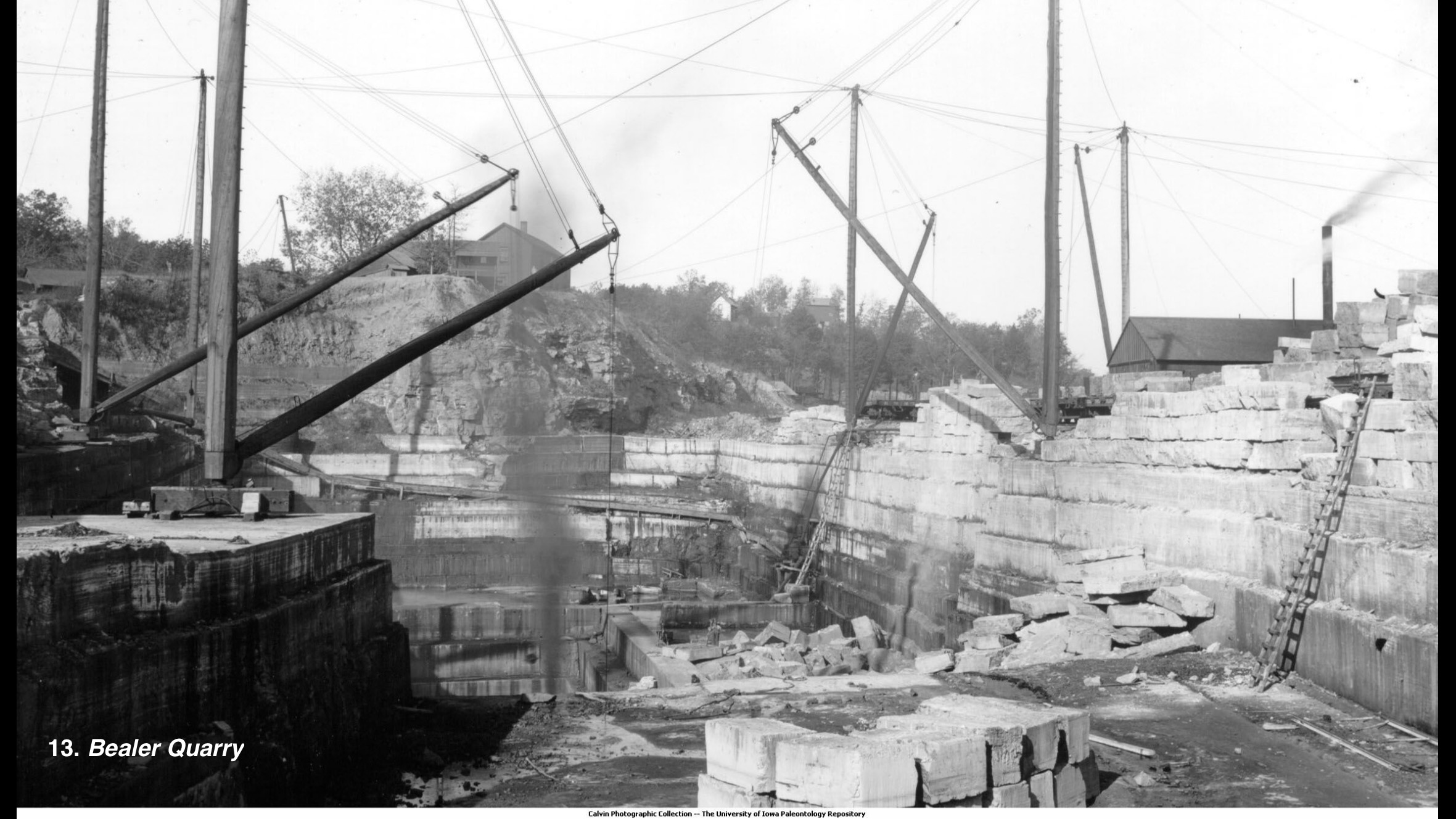
US, Iowa, Cedar Co., Cedar Valley.
Silurian, Niagaran Limestone.
Photographed by Calvin. Photograph No. 157
14. Eroded Surface of Gypsum Beds
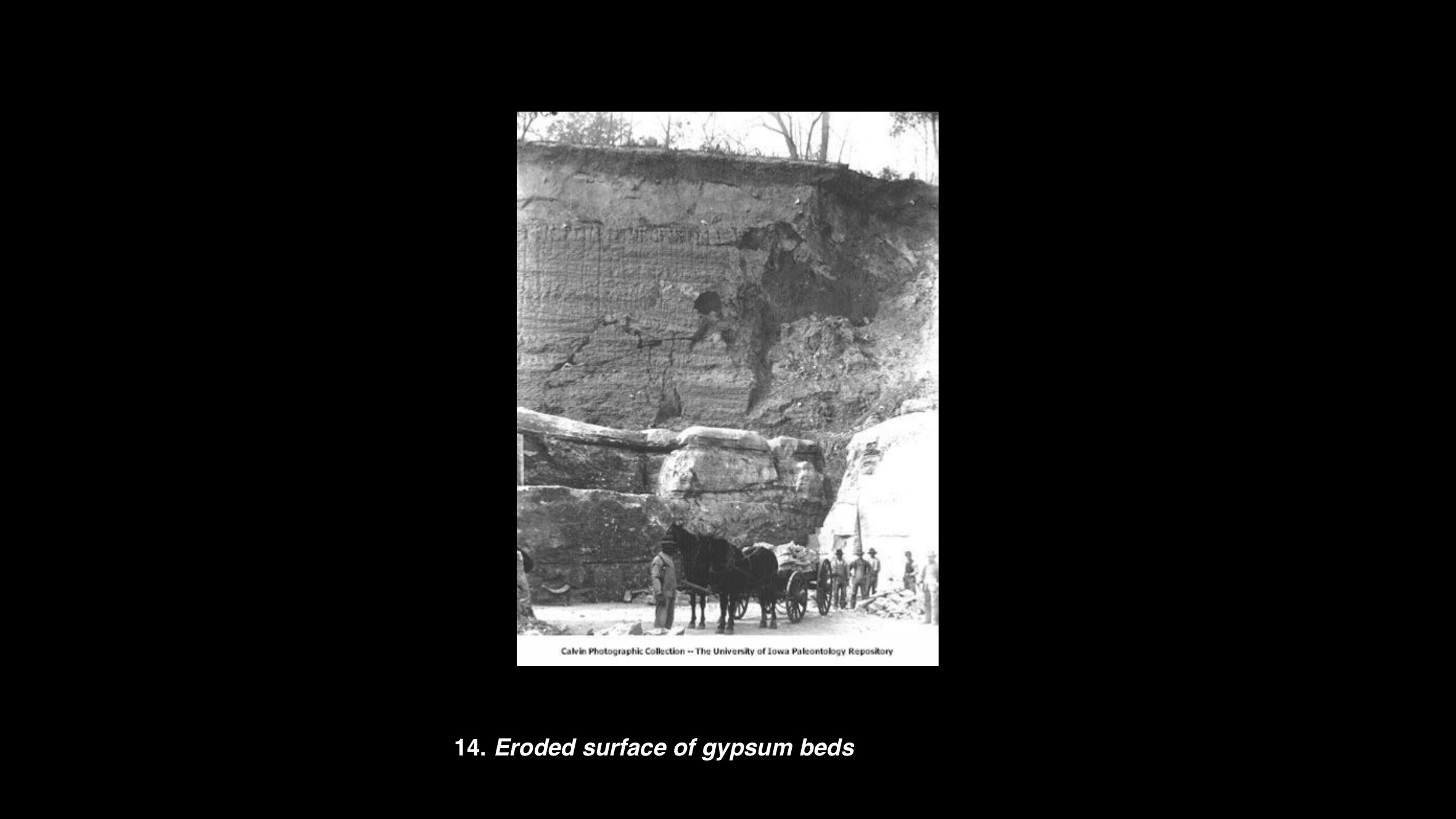
US, Iowa, Webster Co., Fort Dodge.
Jurassic, Gypsum Beds.
Photograph No. 1105
15. Quarry in Niagaran Limestone
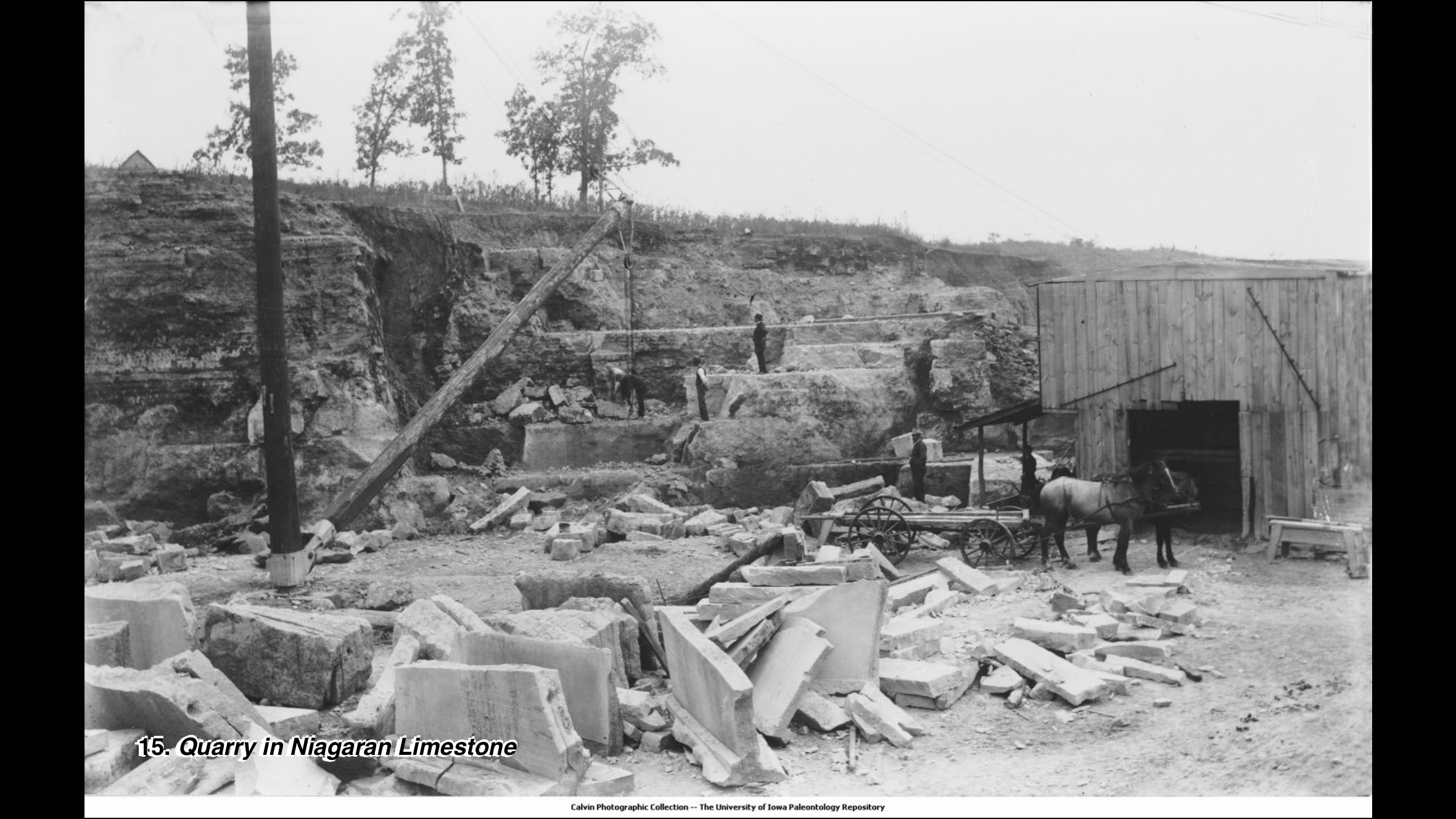
US, Iowa, Fayette Co., Williams Quarry, near Clermont.
Silurian, Niagaran Limestone.
Photograph No. 1991
16. Stratified clays, Mason City Brick and Tile Works

US, Iowa, Cerro Gordo Co., Mason City.
Devonian, Lime Creek Shales.
Photographed by Calvin. Photograph No. 86
17. View near the Terrill Mill

US, Iowa, Johnson Co., north of Iowa City.
Photographed by Nipher, September 12, 1900.
Photograph No. 299
18. Railway Cutting, Oelwein
19. Quarry near Earlville
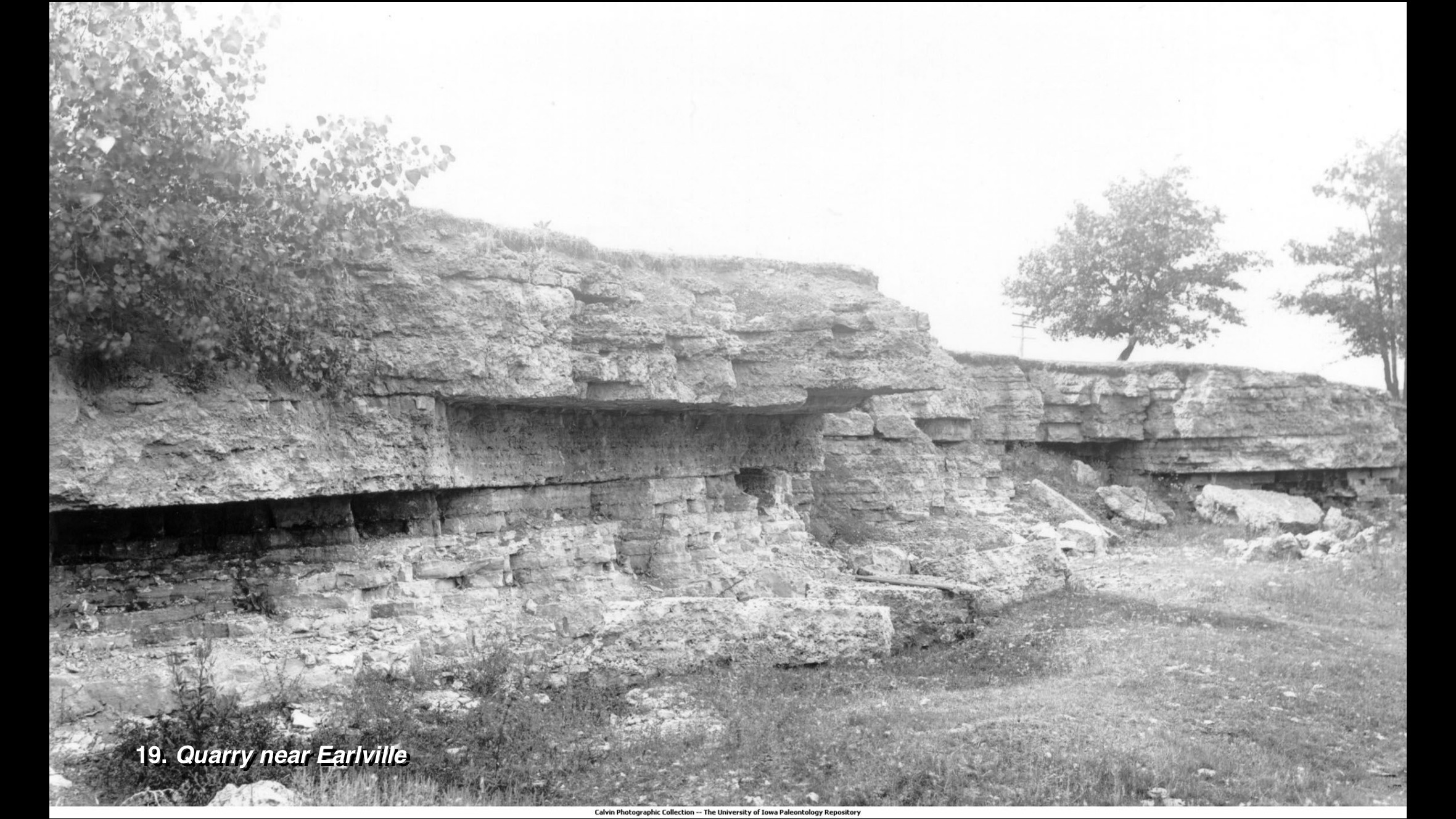
US, Iowa, Delaware Co., east of Earlville.
Silurian, Niagaran Limestone.
Photographed by Calvin. Photograph No. 143
20. Gorge of the Oneota River
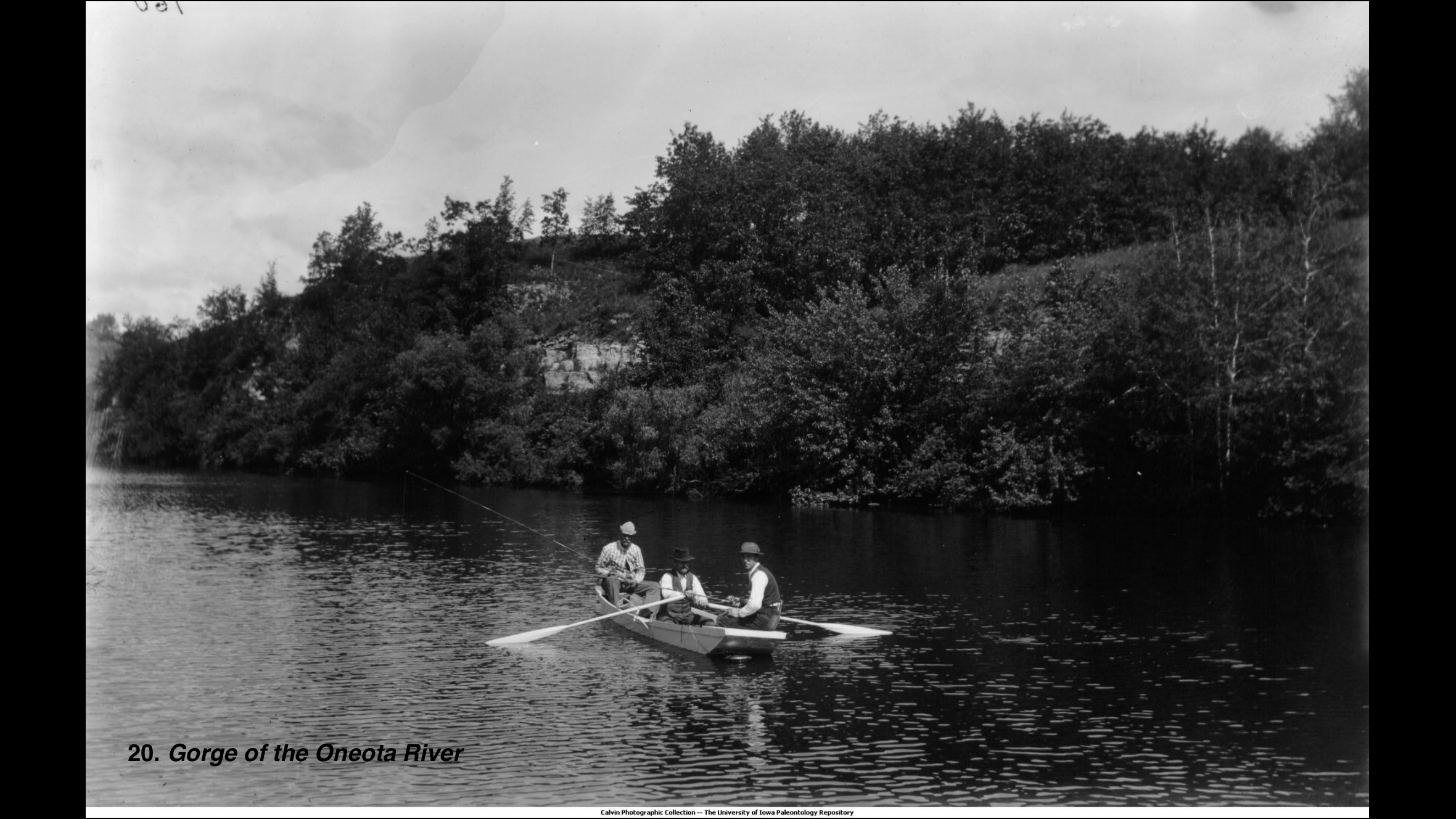
US, Iowa, Howard Co., Forreston.
Devonian Limestone.
Photographed by Calvin. Photograph No. 109
21. Pekay Mine
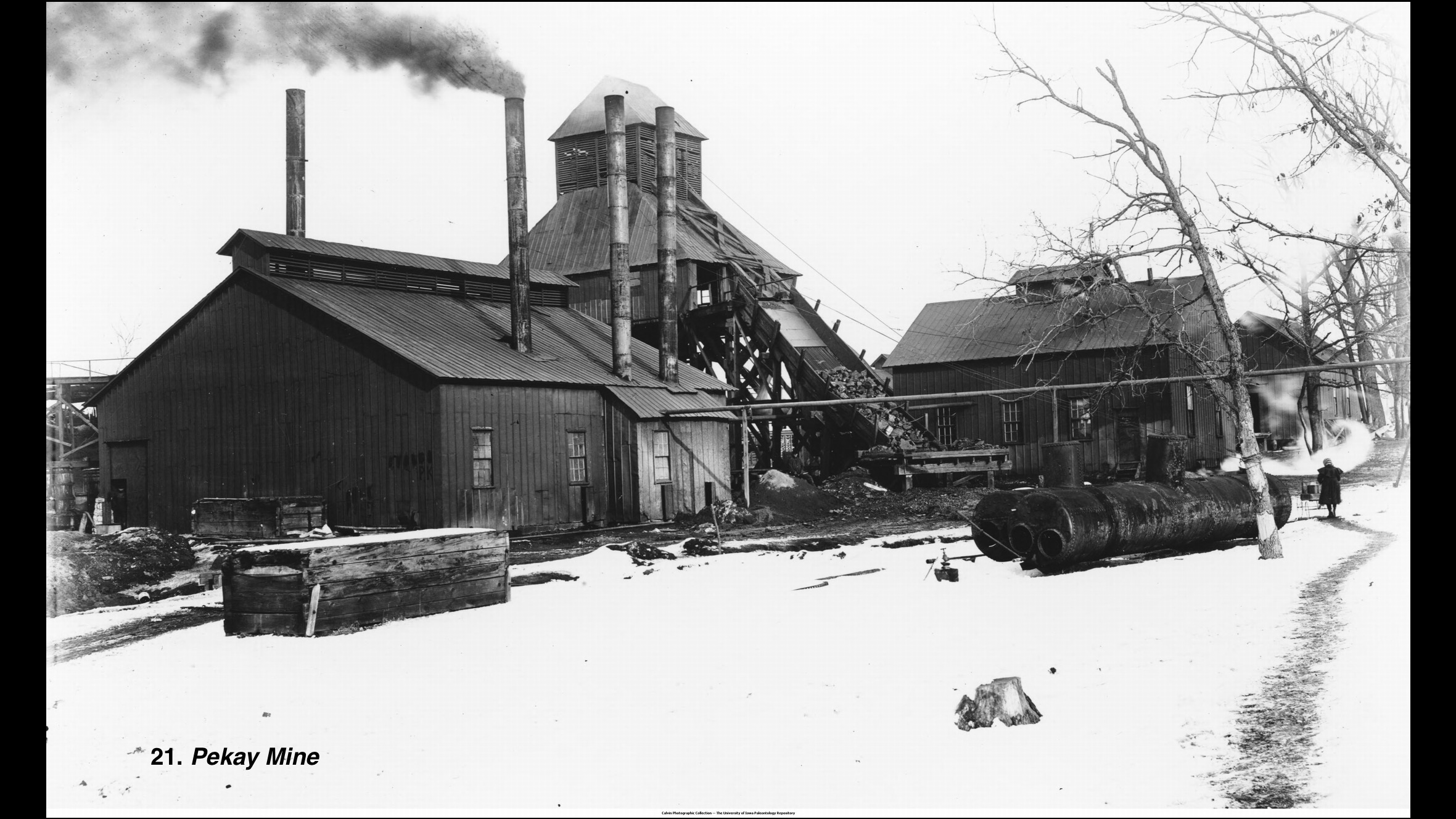
US, Iowa, Mahaska Co. Pekay.
Carboniferous.
Photographed by Hartman. Photograph No. 210
22. The Mill at Littleton
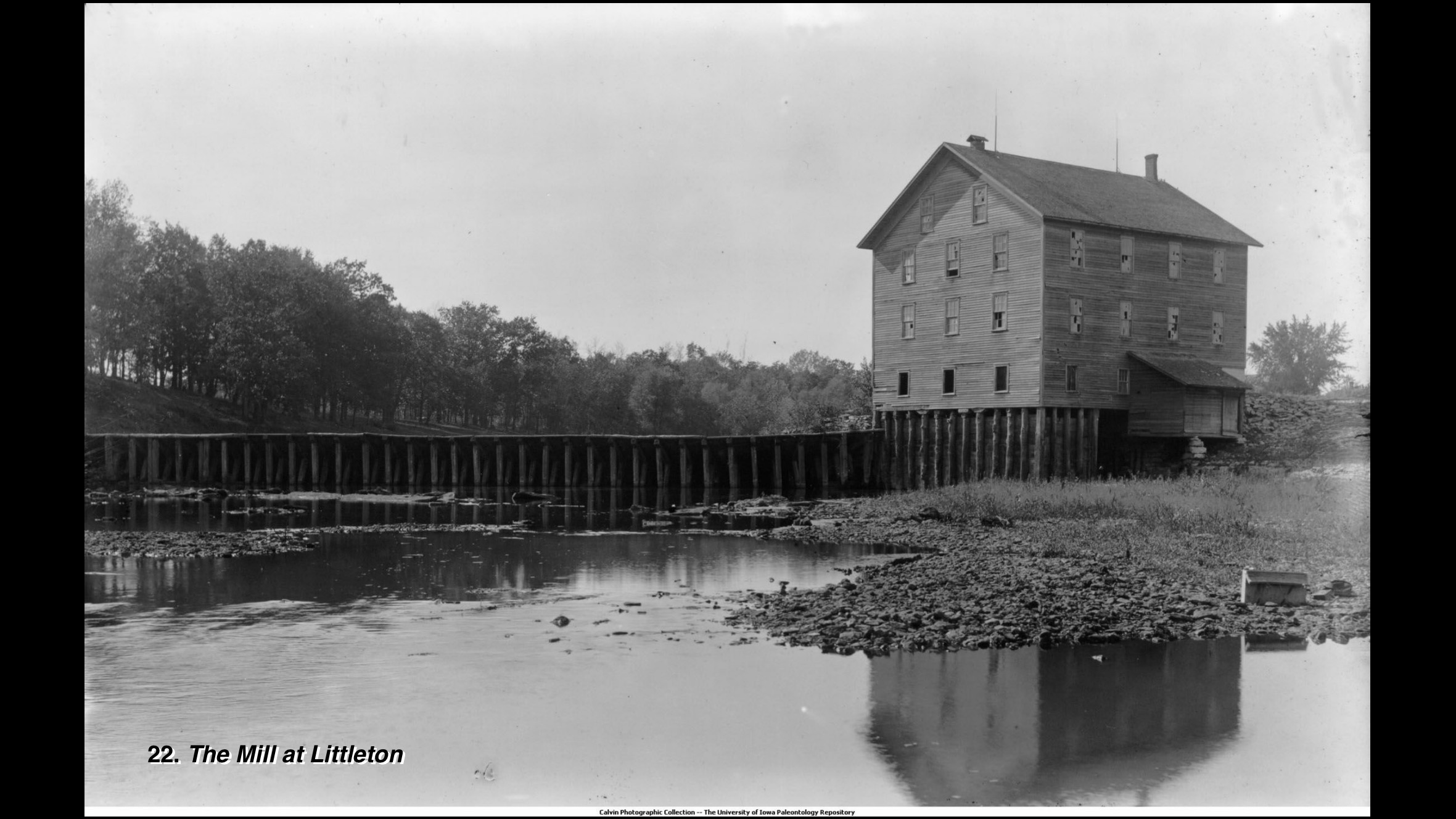
US, Iowa, Buchanan Co.,Wapsispinicon River.
Devonian.
Photographed by Calvin. Photograph No. 112
23. Carboniferous Shale
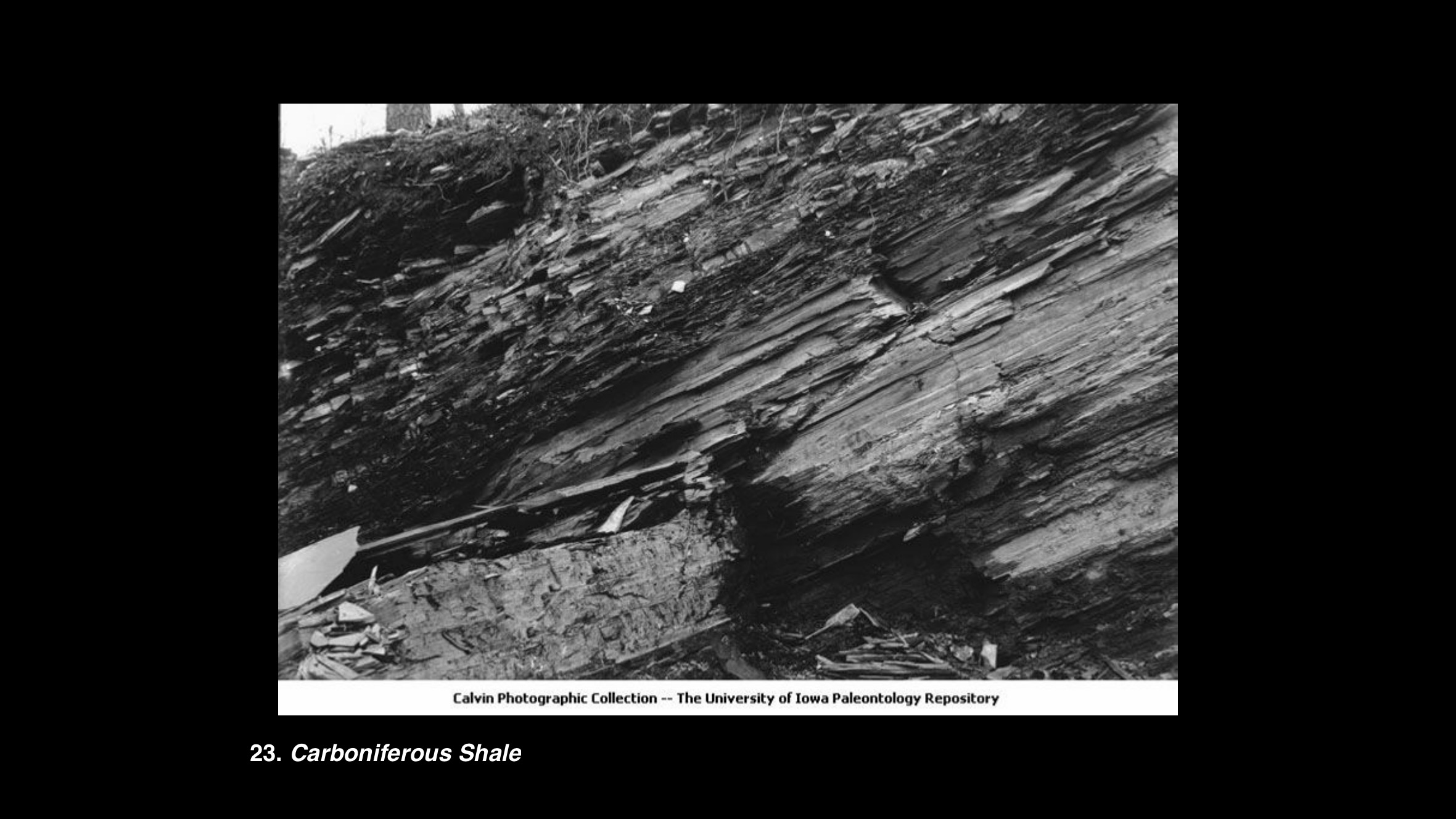
US, Arkansas, Polk Co. east of Mena.
Pennsylvanian.
Photographed by Calvin. Photograph No. 226
24. Kinderhook Oolite

US, Iowa, Humboldt Co.
Mississippian, Kinderhook Oolite.
Photographed by Calvin. Photograph No. 197
25. Palisades, Cedar River
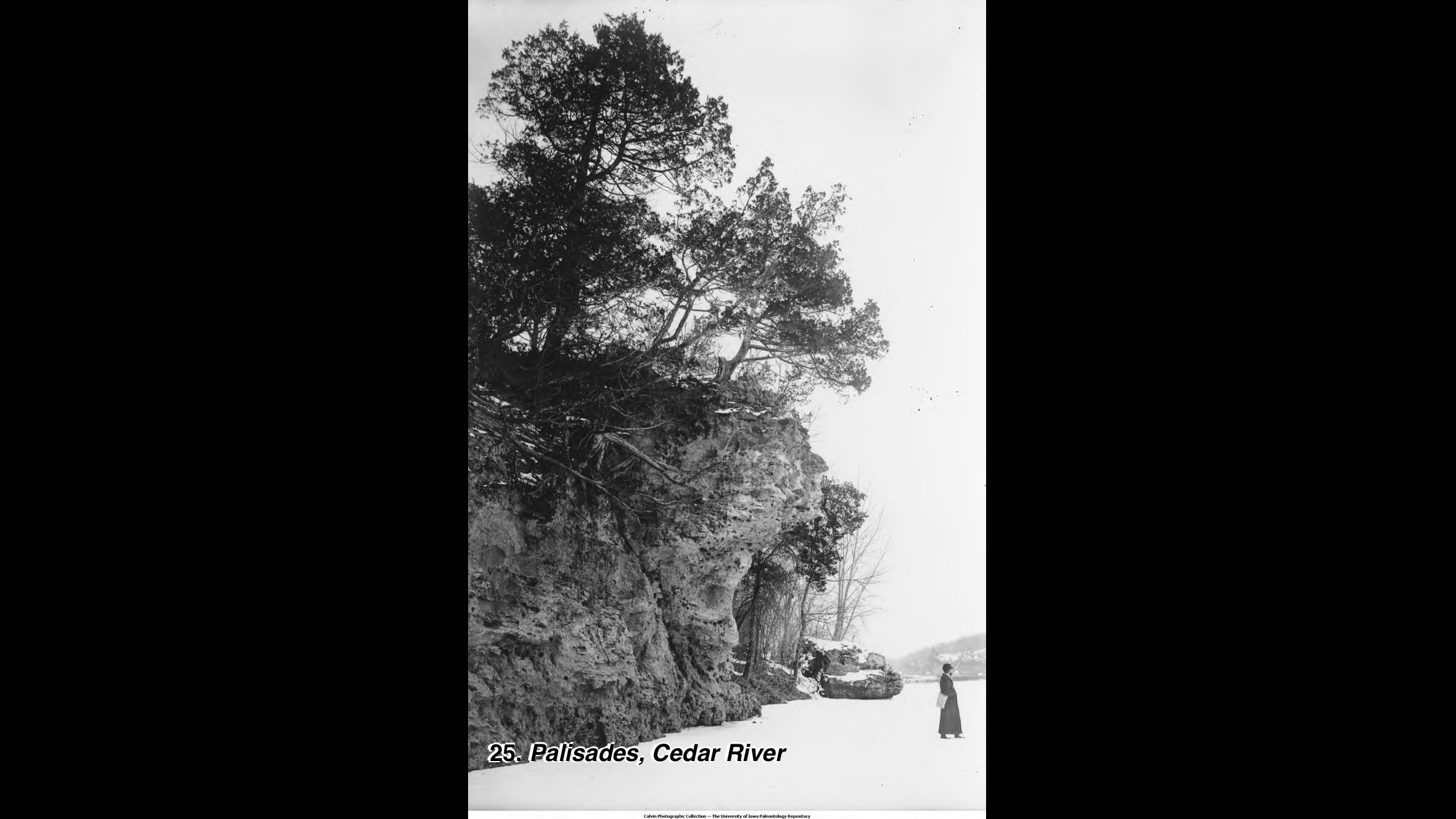
US, Iowa, Linn Co., Mount Vernon.
Devonian.
Photographed by Calvin. Photograph No. 966
26. The Cascade in Winter

US, Iowa, Des Moines Co., Burlington.
Mississippian.
Photographed by Calvin. Photograph No. 214
27. Swan Lake
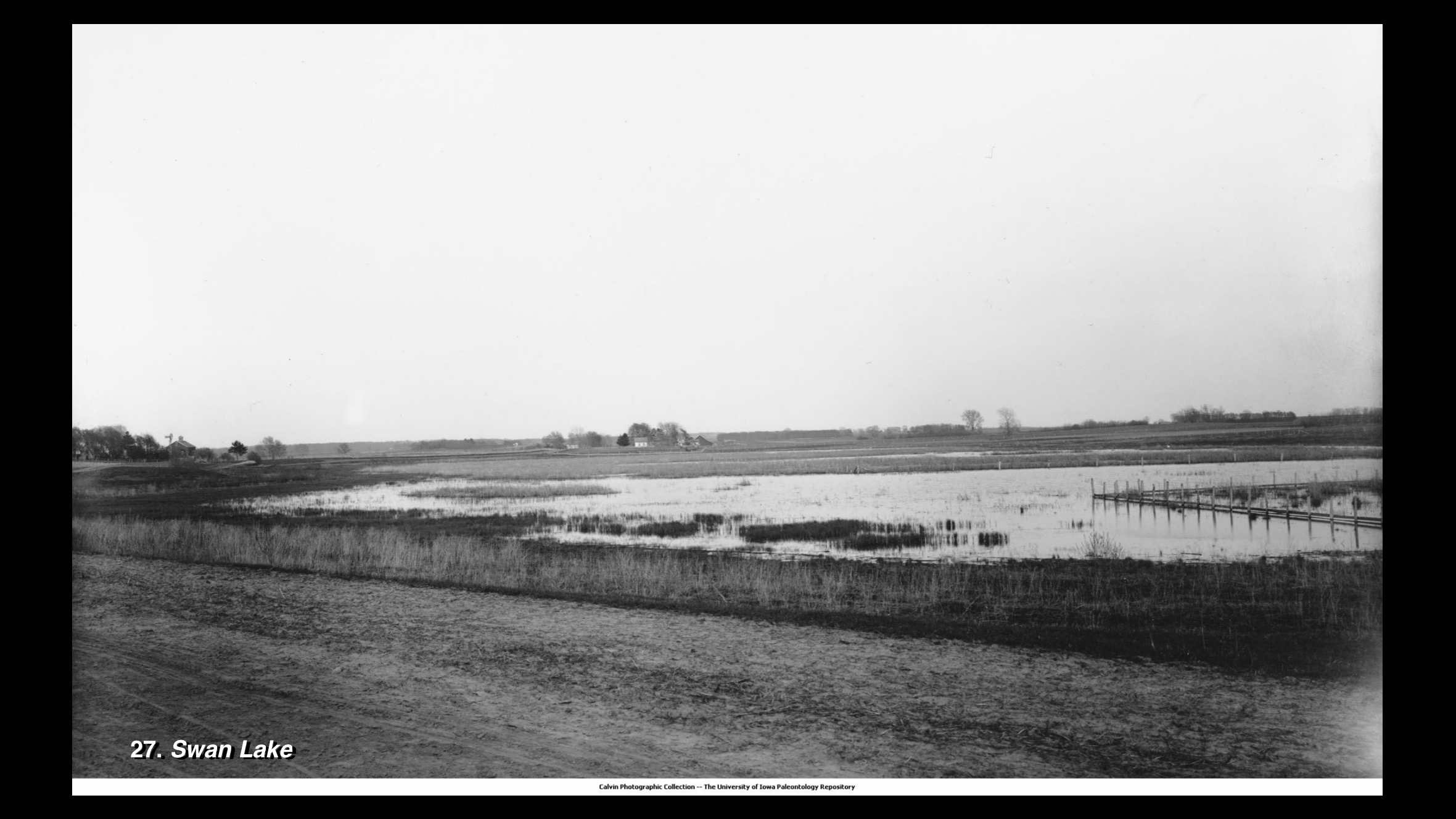
US, Iowa, Johnson Co., Madison Twp.
Pleistocene. Undrained basin in Iowan Drift plain.
Photographed by Savage. Photograph No. 561
28. Ledges of Sioux Falls
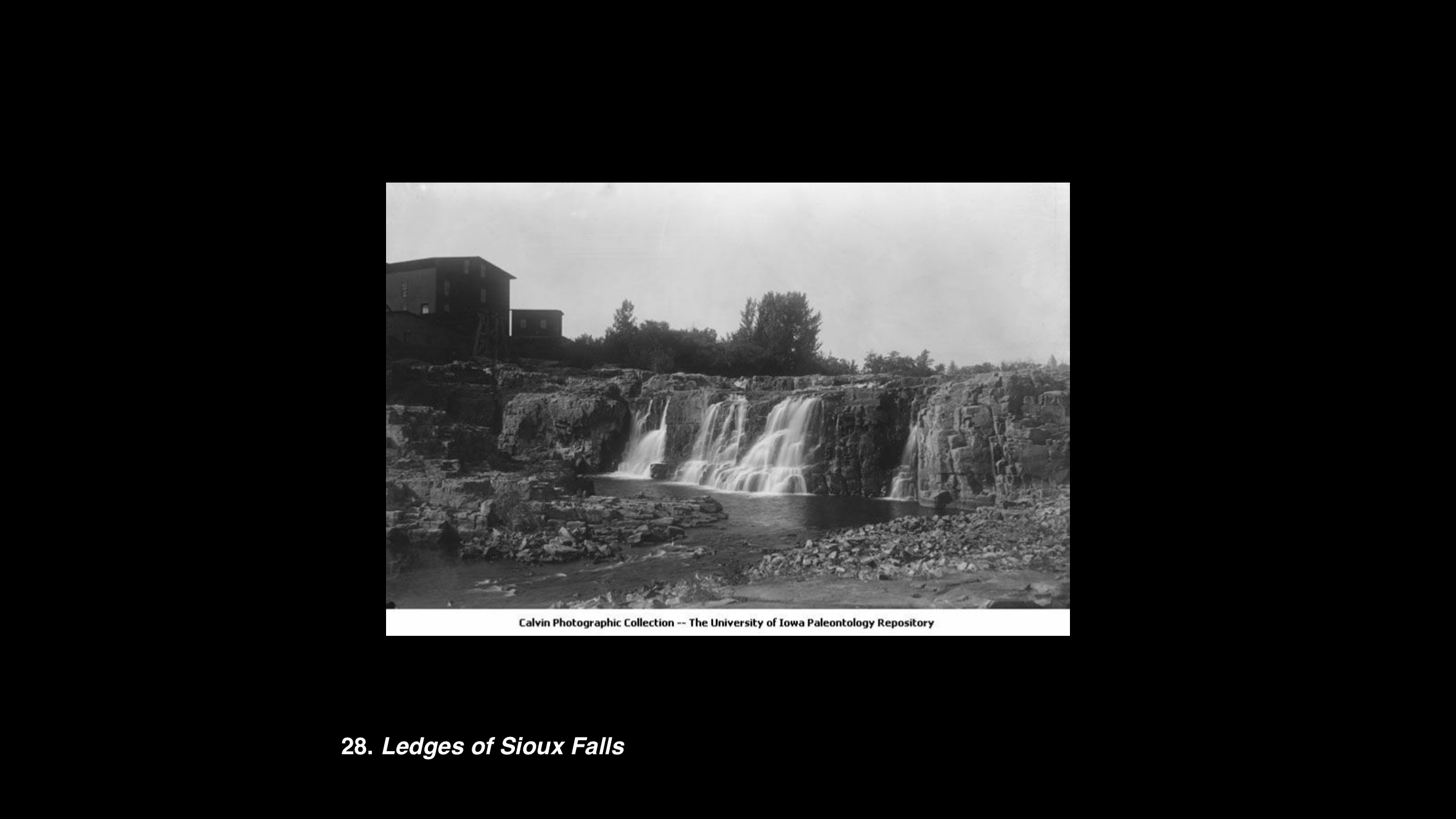
US, South Dakota, Minnehaha Co., Sioux Falls.
Pre-Cambrian, Sioux Quartzite.
Photographed by Calvin. Photograph No. 254
29. The Yellow River at Ion gorge
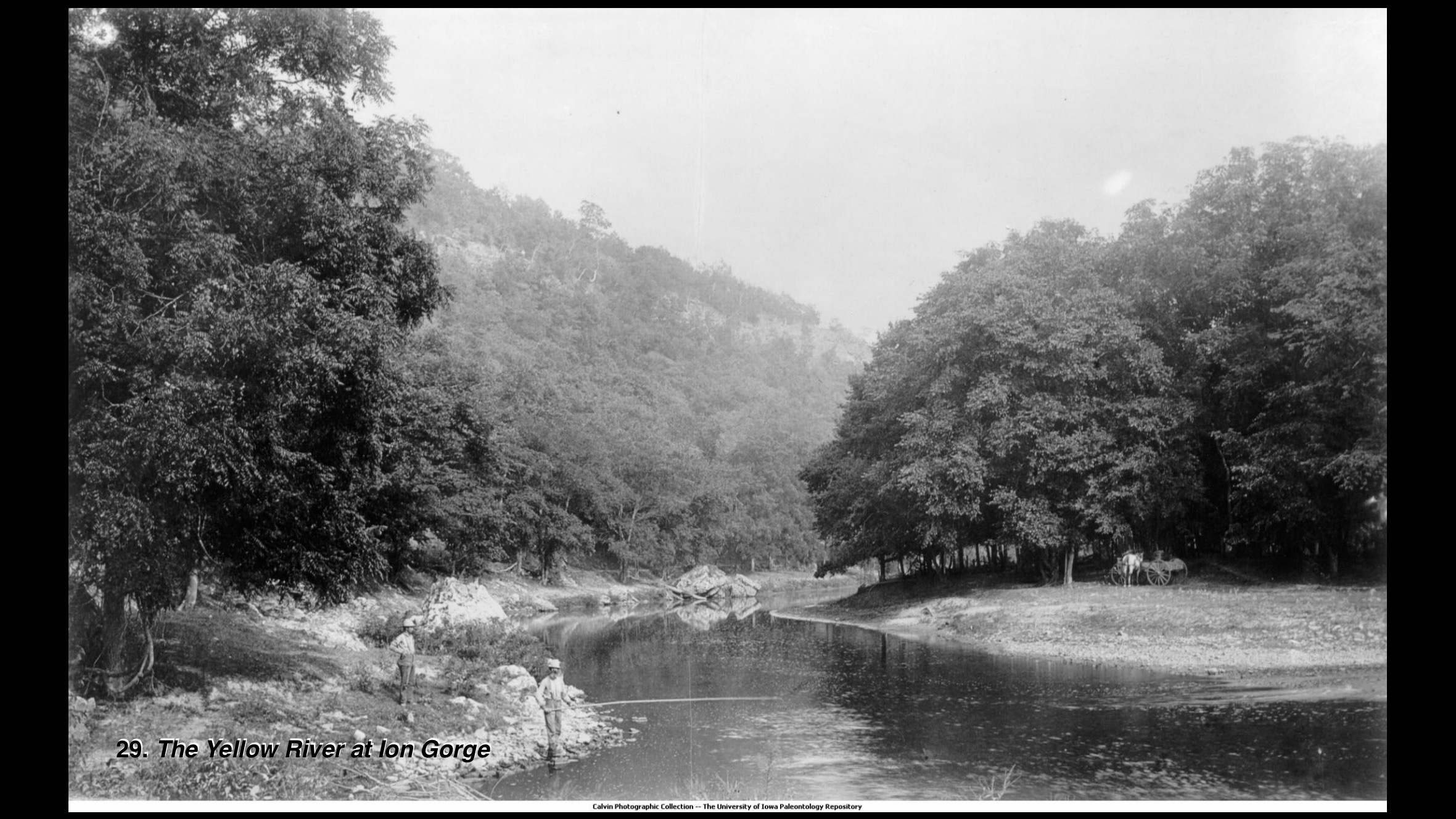
US, Iowa, Allamakee Co., gorge at Ion.
Ordovician, Prairie du Chien Limestone.
Photographed by Calvin. Photograph No. 31
